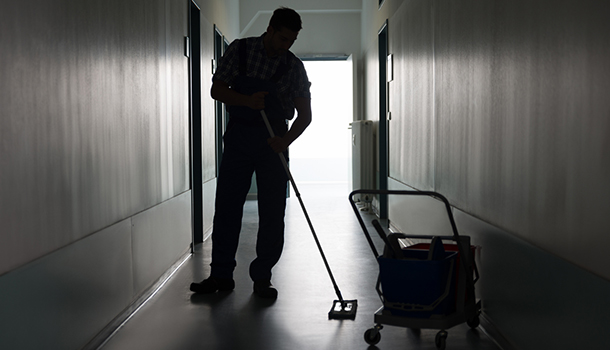
Businesses that understand and foster culture in the workplace experience a lower turnover of workers and report higher engagement levels, according to Gerard Foley, industry relationship manager at icare.
Speaking at the BSCAA NSW annual general meeting, Foley told attendees a study undertaken by icare and Griffith University on the link between social connections and return to work outcomes, found businesses that have a culture where people are trusted and supported informs return to work outcomes.
Foley described the concept of employee culture as an iceberg: “At the tip of the iceberg you can see the policies and procedures followed to create the culture. But below the water is the culture of what staff do when the boss isn’t around.”
“Organisations that demonstrate a culture where people are trusted and supported, where there are no stigmas attached to reporting an injury in the workplace and where supportive relationships among colleagues are encouraged so peers can share ideas, talk about their experiences and offer their advice about getting people back to work all influence faster return to work outcomes.”
Foley said barriers to return to work outcomes mirror the opposite of what the organisations who create a strong culture do.
“Delayed, infrequent communication, indifferent attitude to co-workers, breaches of trust, doubts about employers acting in an employee’s best interests, questioning the legitimacy of compensation claims all hamper return to work efforts.”
Between 2013-2017, the most common injury in NSW for the cleaning of government and non-government and facilities industries was traumatic joint, muscle and tendon injuries. The most common injury location was the upper limb and the mechanism was ‘body stressing’.
From 2013-2017, there were just under 3500 claims made in the cleaning industry. Of those claims, medical only claims (involving no time off work) came to 1472. The average time taken off work in 2017 was 21 days, which is down from 74 days in 2013.
The average payment made on claims for cleaning from 2013-2017 was $14,000, whereas the average payment made on claims for those working in the building and caretaking industries was over $20,000.
Dr Denis Boulais, national risk manager at Broadlex Services, recently published the findings of his research on the prevention of lower back injury within the cleaning.
According to Safe Work Australia, lower back conditions are the most frequent cause of disability in the working population, where eight out 10 people will experience lower back pain at some point in their lives.
According to OCS ANZ managing director Gareth Marriott, the retention of frontline team members is a continual challenge facing the cleaning industry, with the subsequent cost of high turnover rates including the loss of experience, knowledge and relationships built over time.
Studies across the USA, UK and Australia suggest the cost to replace a frontline staff member in the cleaning industry varies from 10-30 per cent of their annual wages.
The commercial cleaning industry in Australia employs about 156,000 people and is worth more than $7.9 billion annually. In New Zealand, the same sector is worth more than $1 billion annually and employs more than 30,000 people.
Research by New Zealand Industry Body, Building Service Contractors New Zealand (BSCNZ) in 2015 showed the average turnover of cleaning staff within a 12-month period is 23 per cent. In Australia, that figure traditionally sits between 35 per cent and 40 per cent.
Comment below to have your say on this story.
If you have a news story or tip-off, get in touch at info@3.106.117.80.
Sign up to INCLEAN’s newsletter.





